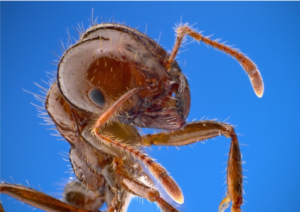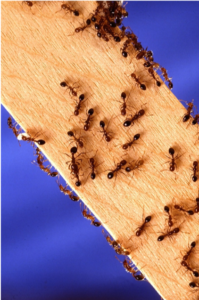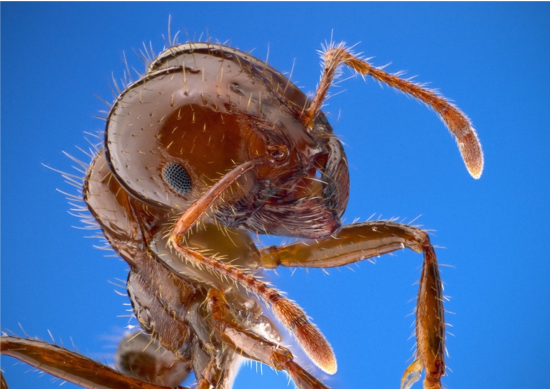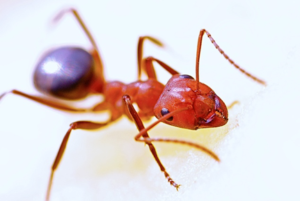How to Treat Fire Ants
Fire ant service from Mosquito Joe (and some fascinating information on Fire Ants)
Fire ants are not just a nuisance in Texas, they are dangerous and do an incredible amount of damage. Red imported fire ants are an invasive species, not just to the US but to Australia, China and Taiwan. Over five billion dollars (yes, BILLION) are spent each year in the States on medical treatments, damage and control of fire ants. They also cause $750 million dollars’ worth of damage per year to agriculture in the US. What is just as incredible is the amazingly fast adaptation some of our local creatures have gone through to deal with these imports. In 2009, a study found that in just 70 years, lizards have adapted both their behavior and their leg length to help them avoid and escape the danger of fire ants.
Distinguishing native and imported fire ants is difficult, particularly since the imported ants vary in size. Imported ants are also composed of two genetically distinct types: Monogyne (one queen colony) and polygyne (multiple queen colony). Regardless of which type we look at, there are some common themes amongst all fire ants that are fascinating and impressive. This understanding of their behavior is what enables us to treat them effectively.


There are up to 250,000 ants in a colony. These ants are made up of workers – who forage for food, soldier ants – these have larger and more powerful mandibles, and the queen (or queens depending on the type). The queen lives up to 7 years, while the males live between 5.5 – 6.5 years each.
Fire ants’ mate when the temperature is between 70 and 95 degrees, the humidity is high, and the winds are low (a typical day in this part of the country). They also tend to breed within 24 hours of rain. Once they mate the male dies. The female will then fly for 2-3 miles, up to a height of 2,000 feet, until she lands to nest. It is interesting to note that 99.9% of these females die before they nest (a fact we should all be thankful for).
When the female lands she pulls off her wings and eats them. This meal sustains her until her eggs hatch and her offspring are ready to head out and forage. The queen will then burrow and lay her eggs. Forty-five days later her offspring hatch. The workers head out of the nest and gather food to bring back.


The most successful treatment for fire ants is a two-step method and this is what we employ at Mosquito Joe. The first step is a bait broadcast that is placed in the yard. This bait has a 3-day delay on it, which enables us to circumvent the taster ants and kill the queen. Particularly in a monogyne colony, killing the queen will end the reproductive ability of the colony. We combine this broadcast with a nest service that we perform at each visit. We recommend the broadcast be repeated every 10-12 weeks, and a visit once in between to directly treat the nests. For this portion of the service, we inject down into each nest and kill all the ants we contact with the product.
While we may kill all the queens in the yard, it is important to remember that new queens will fly in. Fire ants are also excellent at moving locations when circumstances require it. You may recall the images posted after Hurricane Harvey of fire ant rafts floating along the flood waters. These rafts are composed of a colony of ants, gripping to one another to form a living raft, with the queen protected within. This behavior will occur whenever circumstances dictate, so while your yard may be fire ant free one day, a heavy downpour and localized flooding can change that quickly. Treating consistently and using this two-step method will get rid of them and keep them out of your yard.




